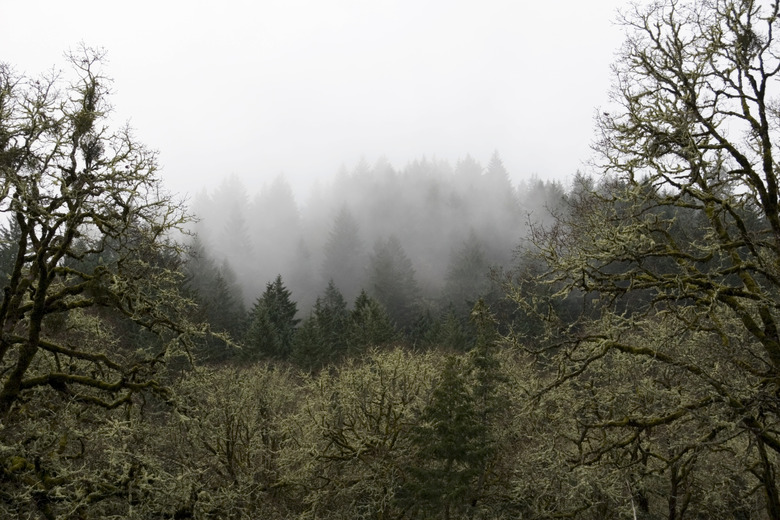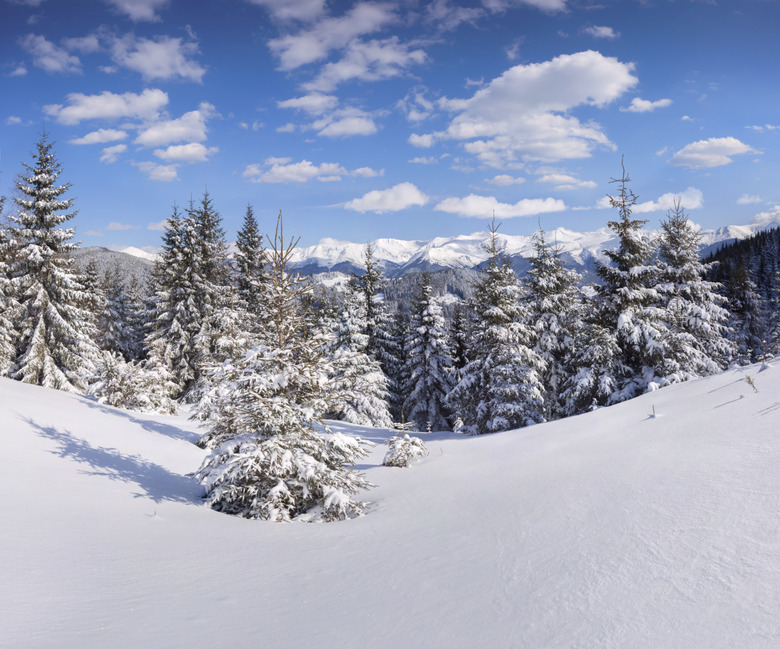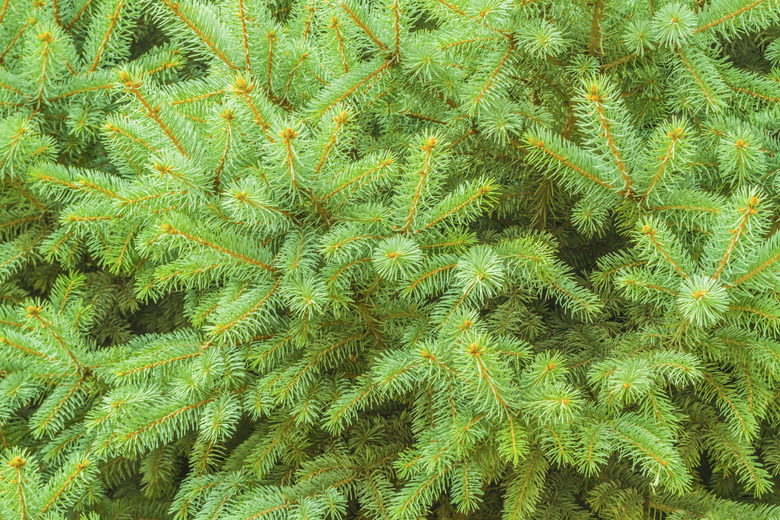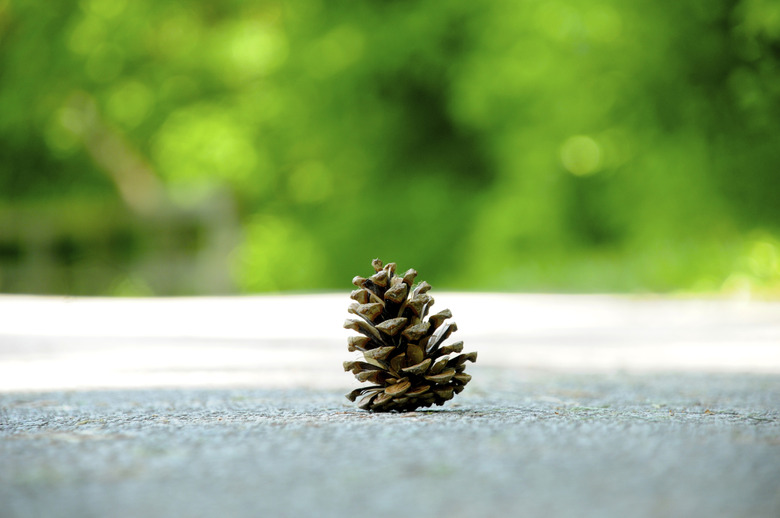What Is The Difference Between Douglas Fir & Frasier Fir Trees?
Although both members of the Pinaceae or pine family, the Douglas (Pseudotsuga menziesii) and Fraser fir (Abies fraseri) trees are not closely related. Fraser fir is botanically a true fir, as it's a member of genus Abies. Douglas fir is in the genus Pseudotsuga, a grouping of fir tree cousins. Regardless of taxonomy, both Douglas and Fraser firs are highly prized as Christmas trees, since their soft needles and well-branched silhouettes withstand the warmth and heat of the house for up to a month.
Origins
Origins
The Douglas fir is native to the American West in both the coastal forests of the Pacific Northwest as well as the slightly drier mountain elevations of the Rocky Mountains from Canada to Mexico. It grows where the winter low temperatures range from 10 to minus 30 degrees. The Fraser fir is native only to a small area of the highest elevations of the southern Appalachian Mountains from Virginia to North Carolina and Tennessee. Fraser fir grows in similar cold-temperature winter climates.
Size and Habit
Size and Habit
Douglas fir trees mature up to 275 feet in its native habitat but more commonly 80 to 120 feet in cultivated garden landscapes. It attains a narrow, spirelike silhouette or narrow, conical form with lowest branches hanging horizontally to downward. A very old Douglas fir has a flattened top, not a pointy tip. A Fraser fir matures 80 feet tall in the wild, and 45 to 75 feet tall in garden settings. Its silhouette is much broader, becoming a fully cone-shaped pyramid with tip when mature. The branches join the trunk at right angles but angle slightly upward at their branch tips.
Needles
Needles
From a distance, the needles on both trees appear deep bluish green. Each needle is flexible and flattened, about 5/8 to 1-1/4 inch long in both trees. Looking at the needle arrangement on the twigs helps distinguish the species. Douglas fir tree's needles are held in two ranks around twigs looking like a v-shaped groove appears on the top side of needle-covered branches. Fraser fir needles are held upward all around the twigs, making them look rounded and plump.
Cones
Cones
A definitive way to quickly distinguish a Douglas fir from a Fraser fir is by the cones. A Douglas fir's cones are downward hanging. The cone's scales have tonguelike appendages, each with three fork tips. The cones drop intact from the branches. Fraser fir cones are held upright on the branches. They look like oval cylinders with wide, rounded and smooth-edged scales. Fraser fir cones disintegrate and shatter while still attached to the branches. Only scales or small chunks of the cones drop to the ground.




